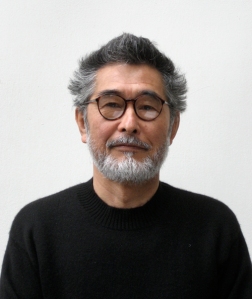The following bio is from Taiji’s website, taijiarita.com
 Taiji Arita was born on January 31, 1941, in Kokura (now part of Kitakyūshū), Japan. After briefly studying law at Chuo University, he opted to instead pursue a career as a photographer and studied at Tokyo Sogo College of Photography under Yasuhiro Ishimoto.
Taiji Arita was born on January 31, 1941, in Kokura (now part of Kitakyūshū), Japan. After briefly studying law at Chuo University, he opted to instead pursue a career as a photographer and studied at Tokyo Sogo College of Photography under Yasuhiro Ishimoto.
Arita photographed from 1964 until 1991. From 1964 to 1966 he worked in the photography division of Nippon Center of Design, Inc.; from then to 1977 he freelanced for numerous publishers and the advertising industry.
In 1975 he published First Born, a series of images of his first wife and son taken over a period of three years.
The series was inspired by the birth of his first child, with the artist using performance techniques with demanding movements and expressions from his models. At times the poses seemed removed from reality.
While creating works of art using his wife and child as subjects, the artist also photographed his family at play. In the more formal work, the performance evokes a characteristic humor and eroticism by use of the interplay between mother and child in their innocently free poses. In this body of work the photographer gives the viewer a powerful sense of presence in the surreal world within the picture. The result of the entire series can best be described as a three person documentary, with Arita playing the role of unseen director and documentarian. The monochrome series was printed by the artist with each of the prints having a distinctive beauty. When one sees the prints firsthand, the keen sensibility and great sensual beauty offer breathtaking moments.
Even today, this series still expresses the fresh energy of the moments the images were made.
The First Born portfolio (68 photographs) is owned by Tokyo Metropolitan Museum of Photography, Tokyo, Japan, as part of their permanent collection.
In 1977 Arita left Tokyo for Ontario, Canada. He continued freelance photography for Canadian and Japanese advertising and publishing industries.
In 1980 he returned to Tokyo and opened Arita Studio specializing in photography for advertising and publishing industries as well as cinematography for television commercials. He married Masako Koiso in 1984.
From about 1980 on, Arita started to paint in oils and yet continued to be an active photographer.
In 1988 Arita published The Forest of the Naked. This collection of 71 expressionist paintings makes the viewer feel the anxiety and loneliness of human existence through images of the human figure in contorted positions. Arita’s paintings are similar to his photographs in demonstrating his acute descriptive powers that are revealed when he transforms the physical body into a part of an object. For Arita art was not just a product made as a result of painting, sculpting or photographing, but rather a way of living. Despite having attained much professional acclaim while living in Japan, he became disillusioned. He yearned for a freer existence in which he could create for the sheer joy of creating and live within the elements of nature from which he derived aesthetic sustenance and inspiration. In the foreword to The Forest of the Naked he writes, “The forest calms me, stimulates me, releases me….”
In 1991 Arita left Tokyo for southern California. He worked as contributing photographer and videographer to Japanese publishers and television broadcasting companies, but started backing away from photography and spending more time on creating fine art (paintings and sculptures).
In 2000, Arita moved north to the redwood forest of the Mendocino coast to begin a life devoted solely to creation of art with his wife Masako. He designed and built a house and studio in Fort Bragg. Together they created Arita’s final body of work titled Fruit of the Redwoods, which used redwood salvaged from the remnants of trees over 1000 years old. This project became a point of reference for several North Coast woodworkers, many of whom studied under James Krenov’s in the Fine Wood Working Program.
Arita’s work both before and after this relocation shows a great and effortless mastery of whatever medium he choses to express himself in. His work was always fresh since he was fearless in investigating new media. Sometimes it appears as if he were channeling a greater consciousness, one whose only purpose in existence was aesthetic.
Arita died in Fort Bragg, California, on July 17, 2011, at 70.
For more information about Taiji:
[…] HomeAbout Taiji AritaPURE Art ShowPhoto GalleryPURE Book Bookmark the permalink. […]